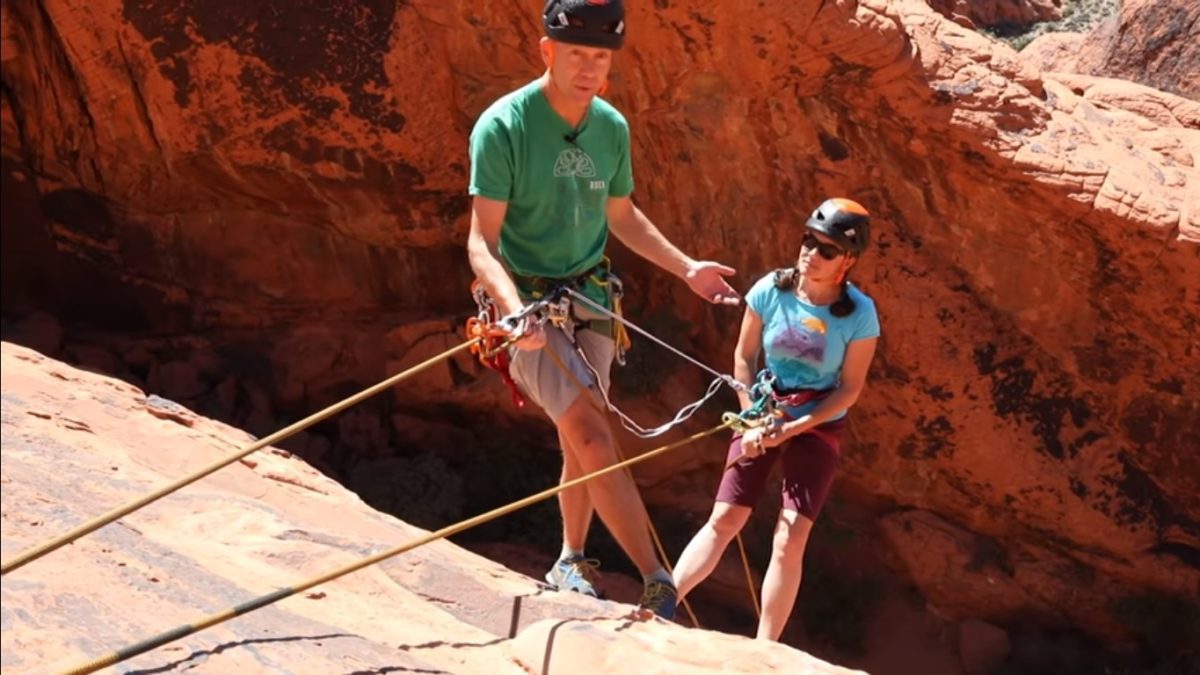Simul-Rappelling is Dangerous, Go One at a Time
The only reason you should need to do it is in the case of an emergency

Simul-rappelling is when two climbers counter-balance each other on a rope that is threaded through an anchor. It’s an advanced skill and the margin for error is very small. It’s dangerous and has been the reason many climbers have died while on rappel.
Some climbers do it to save time, but there is so much risk associated with it that it’s not worth the few seconds you’ll save. If someone tells you that simul-rappelling saves time, suggest going one at a time. Don’t be pressured into it if you’re uncomfortable.
There are many things that can go wrong:
– One climber take their weight off the rope and the other climber drops unexpectedly onto a ledge or worse.
– If there are no backups and one climber lets go of the rope then both will fall to their death.
– Only having one rope through the belay device means less friction which could lead to over-gripping and panic.
– Everyone rappels at different speeds.
– Having two climbers arrive at an anchor at the same time is actually slower than if one arrives and begins the process of readying the next rappel while the other descends.
In the special circumstances that simul-rappels are preferred (rescues):
– Good communication is essential.
– One or more backup systems could prevent an accident, things such as stopper knots in the ends of the rope or a “hands-free” backup such as a friction hitch.
– Rappellers can link themelves with a tether, in effect closing the system until they both reached the ground.
Rappelling is much more efficient if you have a good system:
– The first person rappels, builds an anchor and begins to thread the rope.
– The second joins and clips in and then pulls the rope from above as the first continues to thread it through the anchor.
– Once at the middle mark, the first rappeller can prepare to rappel again while the second continues to pull the rope from above.
– Tie knots in the end, use your backup (prussik) and repeat.
Rappelling is dangerous if done incorrectly, so practice and seek the proper training. Always check your backups, your lockers and know where you’re rappelling to. And always keep an eye on your partner as they transition from the anchor to rappel to be sure they didn’t miss something.
In this video, IFMGA guides Dale Remsberg and Olivia Race demonstrate the safest way to simul-rappel. It takes much more time and is more cumbersome than just going one at time.


